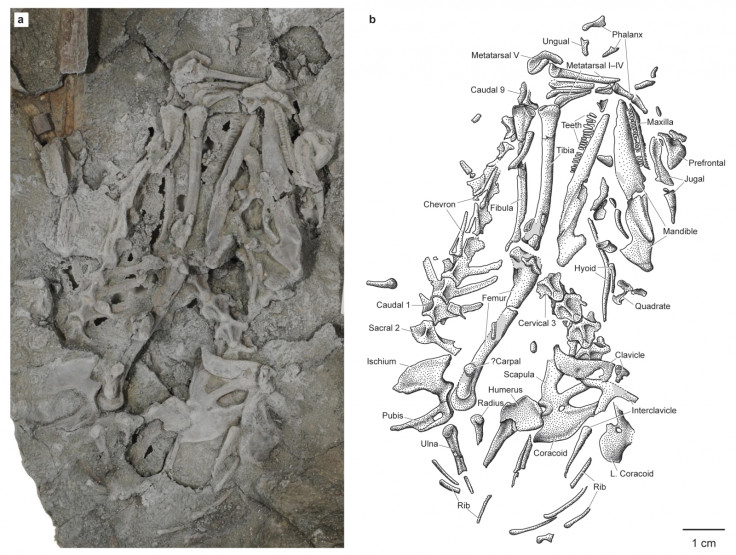A 75-million-year-old lizard species that lived with dinosaurs has been discovered on Egg Mountain
The newly discovered species lived alongside dinosaurs at Egg Mountain in Montana, US.
The discovery of two extremely well-preserved fossil skeletons has led to the identification of a new species of iguanian lizard from the Cretaceous Period.
The species is an elusive ancient ancestor of present-day iguanian lizards, which include iguanas, Old World chameleons, anioles and the so-called Jesus Christ lizard, a basilisk that can skim quickly over a surface of water.
The two skeletons are 75-million-years-old and were found at Egg Mountain, Montana, in the US, and the species has been named Magnuviator ovimonsensis, which means "mighty traveller from Egg Mountain". Its closest-known relatives from the period were found in present-day Mongolia, about 9,000km away from Egg Mountain.
Magnuviator ovimonsensis was about 36cm (14in) long and could have eaten either insect or plants.
"It is incredibly rare to find one complete fossil skeleton from a relatively small creature like this lizard," said study author David DeMar of the University of Washington and the Burke Museum in the US. "But, in fact, we had two specimens, both from the same site."
This type of lizard branched off from the rest of the iguanians very early on, the study authors said. The iguanians that survive today are distant cousins of Magnuviator, and the modern branch of the family arose after the end of the dinosaurs 66 million years ago.
"These ancient lineages are not the iguanian lizards which dominate parts of the Americas today, such as anoles and horned lizards," said DeMar. "So discoveries like Magnuviator give us a rare glimpse into the types of 'stem' lizards that were present before the extinction of the dinosaurs."
Egg Mountain is a rare site where many dinosaurs and reptiles from the Cretaceous Period have been preserved as fossils. In the Cretaceous Period, the mountain was semi-arid and home to both carnivorous and herbivorous dinosaurs that went there to nest. It was also home to mammals and insects. Scientists are now studying the site to pick apart what makes this site such a rich source of fossils from the period of the end of the dinosaurs.

"We now recognise Egg Mountain as a unique site for understanding Cretaceous Period ecosystems in North America," said Greg Wilson, also of the University of Washington and the Burke Museum, and another study author.
"We believe both carnivorous and herbivorous dinosaurs came to this site repeatedly to nest, and in the process of excavating this site we are learning more and more about other creatures who lived and died there."
The research is published in the journal Proceedings of the Royal Society B.
© Copyright IBTimes 2025. All rights reserved.






















